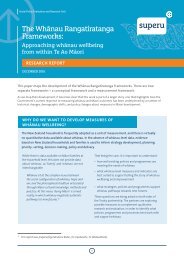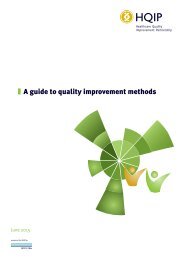2fyY1Py
2fyY1Py
2fyY1Py
Create successful ePaper yourself
Turn your PDF publications into a flip-book with our unique Google optimized e-Paper software.
(213). The extent to which such provisions have been used for the protection of children from digital marketing appears,<br />
however, to be limited.<br />
In other countries, marketing legislation to protect children has focused on broadcast media. Sweden has a general<br />
prohibition on television advertising during programmes that appeal to children under the age of 12; five further Member<br />
States in the WHO European Region prohibit advertising in children’s television programmes: four impose a partial ban<br />
or other restrictions on advertising in children’s television programmes, either during specific time slots or for specific<br />
products; and seven prohibit the showing of sponsorship logos in children’s programmes (213). These regulations are<br />
limited in their application, as they focus exclusively on children’s programming (which does not reflect children’s actual<br />
viewing patterns); they rarely address the use of persuasive techniques or the incitement to overconsumption and “pester<br />
power”; and they often fail to identify which foods are not permitted for marketing to children. Indeed, the reference<br />
in some regulations to “inappropriate” marketing may imply that some HFSS food marketing to children is appropriate.<br />
Furthermore, they fail to reflect the integrated reality of modern marketing communications and apply to one medium<br />
alone (typically broadcasting). In contrast, the European Union Audiovisual Media Services Directive (2010/13/EU) (214) has<br />
taken a broader approach and recommends national co- or self-regulation in HFSS food marketing to children that applies<br />
to traditional television as well as to newer services, such as video-on-demand, Internet television, streaming services and<br />
commercial live webcasts. Powerful digital marketing techniques such as online advergames are considered, however, to fall<br />
outside the scope of that Directive (215).<br />
Such systemic incoherency means that existing rules, despite appearing to be “general principles”, are scattered and are<br />
limited or not applicable to many current marketing communication channels and techniques (216). As a result, these<br />
policies often fail to adequately address non-traditional marketing (e.g. advergames) and platforms (e.g. social media), and<br />
there is convincing evidence that much marketing to children is readily permeating through the gaps in broadcast media<br />
regulation (18, 20, 217–219). Many countries with similar general marketing legislation (including provisions for marketing<br />
to children in general terms) have thus felt pressured to introduce additional codes of conduct specifically relating to HFSS<br />
food marketing to children. The Danish Forum for Responsible Food Marketing Communication (220) issued a code of<br />
conduct intended to limit the marketing of unhealthy food to children under the age of 13, with the support of the Danish<br />
Government.<br />
Explicit policy and legislation on marketing of foods high in saturated fat, salt and/or free sugars<br />
A few countries have introduced explicit policies or legislation to restrict HFSS food marketing to children; e.g. Ireland<br />
and the United Kingdom have statutory restrictions on broadcast advertising for HFSS foods in and around child-directed<br />
programming. While they tend to reduce marketing according to the criteria of the policy, these are typically quite narrow<br />
in scope, and monitoring of children’s overall exposure reveals that they have not been as effective as initially hoped<br />
(18–20). First, they often have a limited definition of “marketing to children”, e.g. marketing in child-directed programmes<br />
or marketing explicitly targeting children, where the regulation applies to programmes and advertising that have a high<br />
proportion of children in their audience but whose audience sizes, overall, are relatively small. Programmes viewed by the<br />
largest numbers of children (e.g. prime-time soap operas, reality shows, sporting events) are usually aimed at the general<br />
population, and the ads during such shows might attract children’s attention but do not target them specifically. Therefore,<br />
such ads are not subject to restrictions. As a result, HFSS marketing moves to the non-restricted family viewing times, with<br />
larger numbers of child viewers than dedicated children’s programming, and children’s exposure may remain similar or<br />
even increase (221). Secondly, restrictions are limited to broadcast advertising, and marketers may shift their investment to<br />
other platforms. Sometimes, these shortcomings are cited as evidence that HFSS marketing restrictions are ineffective and<br />
therefore not a worthwhile policy option. A more convincing interpretation is that they have major loopholes (222), which,<br />
if addressed by expanded regulation, would substantially improve their efficacy.<br />
Industry self-regulation of marketing of foods high in saturated fat, salt and/or free sugars<br />
Self-regulatory approaches to restricting HFSS marketing to children have, to date, been the preferred choice of States<br />
and economic operators (223, 224). Most self-regulatory schemes apply primarily to television advertising and have only<br />
recently started to include digital marketing. The existing schemes are funded and administered by economic operators in<br />
20






